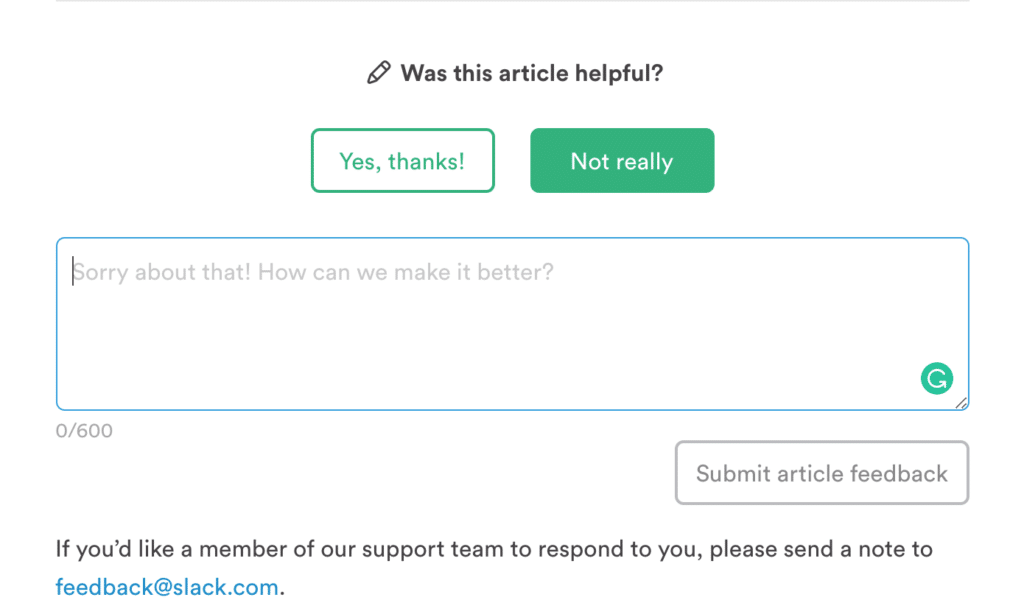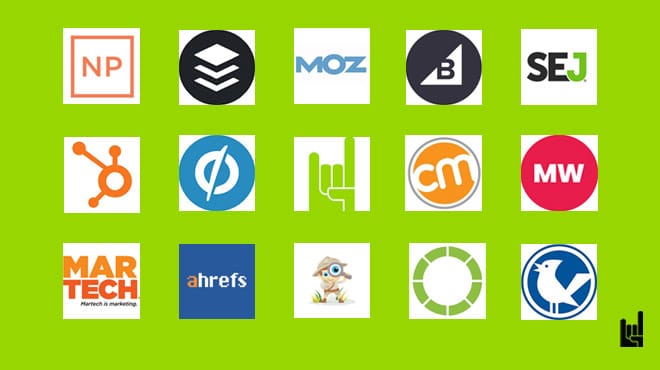It’s a place where website visitors come to learn or be entertained. During their visit, you will get the opportunity to engage with them and turn them into users or customers. Therefore, it is your job to make sure that their visit is:
- Relevant (they found what they came for)
- Pleasant (by providing a solid User Experience)
- Transformative (by managing to convert them from visitors to leads)
As a growth marketing agency, we’ve based the bigger portion of our own marketing (marketing agencies need marketing, too!) on inbound and organic marketing, rather than paid marketing. With our most prevalent organic marketing channel being our own blog.
So this is what we do in our blog and the blogs of some of our clients to create leads.
But first, some brief definitions and clarifications.
What is Blog Marketing?
In a few words, blog marketing is the kind of marketing that involves utilizing a blog to create valuable, informative, and engaging content.
Through blog marketing, a company can use its blog to connect with the user and try to turn visitors into customers.
Blog marketing typically involves several elements, including:
- Content creation
- Search Engine Optimization (SEO)
- Conversion Rate Optimization (CRO)
- Promotion
Blog marketing and content marketing often overlap, as content is the main force of the blog. However, there are a few key differences. Let’s take a quick look at them.
Blog Marketing vs Content Marketing vs Blog Monetization
Blog marketing is a subset of content marketing that focuses on utilizing a blog. On the other hand, content marketing encompasses a wider range of content formats and distribution channels.
At the same time, blog marketing is different from blog monetization. The scope of blog monetization is to generate revenue directly from the blog, instead of nurturing leads, and turning them into customers who, in turn, will generate revenue. Some of the most common methods of blog monetization include: Advertising, Sponsorships, Affiliate Marketing, and subscriptions.
Now that these definitions are out of the way, let’s dive deeper into what you are here for in the first place: blog marketing.
Bringing Value to Your Reads
A blog is first and foremost about creating value for the readers.
This kind of value can take many different forms with the most typical being:
- Educational value: aims to teach and inform readers about specific topics or subjects. It provides valuable knowledge, insights, and explanations. What’s more, it can offer time-saving value through practical shortcuts, tips, and tactics. This is the kind of value we usually offer from our own blog.
- Entertainment value: seeks to engage and captivate readers through storytelling, humor, or compelling narratives. It offers a break from routine, providing enjoyable and engaging experiences.
- Social value: fosters a sense of community by encouraging social interaction, and promoting engagement among readers. It usually involves content that encourages readers to share their thoughts and experience. Additionally, it may include discussion forums.
- Inspirational value: aims to motivate and uplift readers. It shares stories, personal experiences, or examples of success and resilience to inspire readers and ignite their own aspirations and ambitions.
- Emotional support value: its mission is to provide comfort, empathy, or solace to readers who need support. It offers understanding, encouragement, and resources to help readers navigate the difficult situations they’ve found themselves in.
No matter the kind of value your blog offers, to make the most out of your blog, you will need to equip the below tactics.
This is how we do it.
1. Write Relevant Topics for Our Target Customers
To attract our target readers, we focus on writing about topics that are directly relevant to their needs, challenges, and interests. Accordingly, our themes include digital marketing, SaaS, startups, and tools.

Our blog, like most other digital marketing blogs, attracts 2 main personas:
- Potential customers: Visitors that want to learn more about digital marketing because they want to purchase marketing services
- Competitors: Visitors that want to learn more about digital marketing because that’s their job and they are looking to dive deeper
Paradoxically, we create content for both competitors and possible leads.
2. Create Thoughtful, Original Content
Originality is at the heart of our blog strategy. We try to deliver content that stands out from the crowd, providing unique perspectives, ideas, and experiences.
For example, we’ve done prime research and published articles such as LinkedIn Experiment: Link in Post VS Link in Comment. And sometimes, we publish original articles that have zero practical value such as History of SEO: The Evolution of SEM (1950s — Today) or The 5 Weirdest Guest Post Emails We’ve Received.
That said, we also offer pretty standard guides you’d expect from a digital marketing blog, like Product-Market Fit: The Definitive Guide [2023]. We know that we aren’t inventing the wheel with these kinds of articles but we have to do what needs to be done. So when we do cover commonplace titles such as these, we try at least to offer a unique angle.
3. Craft Original, Branded Visuals
Visuals play a vital role in enhancing the appeal and impact of our blog posts. From the thumbnails and open graphs to the in-article images and infographics, we often invest in creating original and branded visuals.
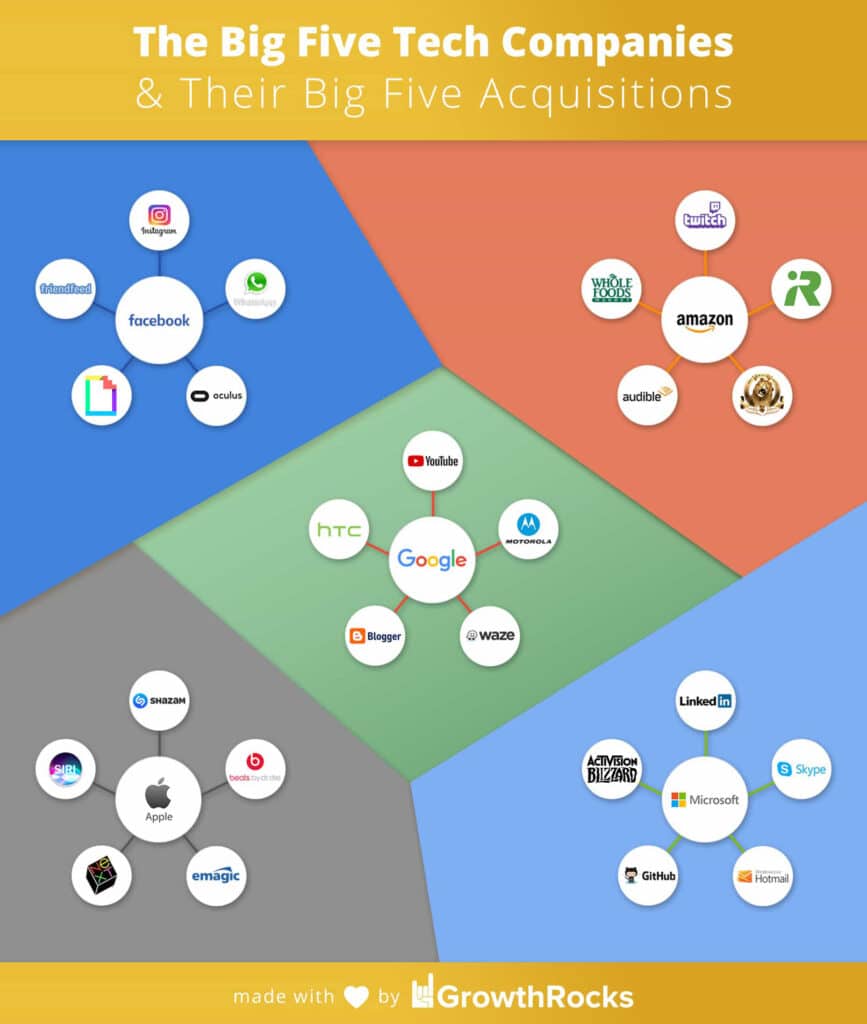
These visuals not only make our posts visually appealing but also help simplify complex information, making it easier for our audience to grasp and engage with the content.
4. Add Internal Links
Internal links help search engines understand the structure and relevance of our blog, thus improving overall SEO. But we often forget that internal linking is the glue that holds the blog together. Thanks to internal linking readers can go through a seamless journey across our blog.
By strategically adding relevant internal links, we encourage readers to explore more of our content and driving engagement and building a sense of trust.
5. Implement Tooltips for Terminology
No one likes encountering unknown words and terms because they have to open a new tab, learn what the word is, and then return to the blog.
Tooltips are UI elements that provide further information. Tooltips are making it easier for users to go through your content.

Especially if your blog is too technical, consider adding or creating a tooltip.
Delivering a Solid User Experience (UX)
Our commitment to delivering an exceptional user experience is reflected in our blog design. We focus on making our blog sticky by optimizing the overall UX. This includes clear navigation, fast page loading speed, and a mobile-friendly layout.
By providing a seamless and enjoyable reading experience, we keep our audience engaged and encourage them to spend more time exploring our content.
1. Add Sticky Table of Contents
To improve navigation within our blog posts, we include a sticky table of contents at the beginning of long-form articles.

This feature allows readers to jump to specific sections they are interested in, saving them time and making it easier to find the information they need.
2. Enable Comments and Related Posts
Engagement is a crucial aspect of our blog. We enable comments on our posts, inviting readers to share their thoughts, ask questions, and engage in discussions.
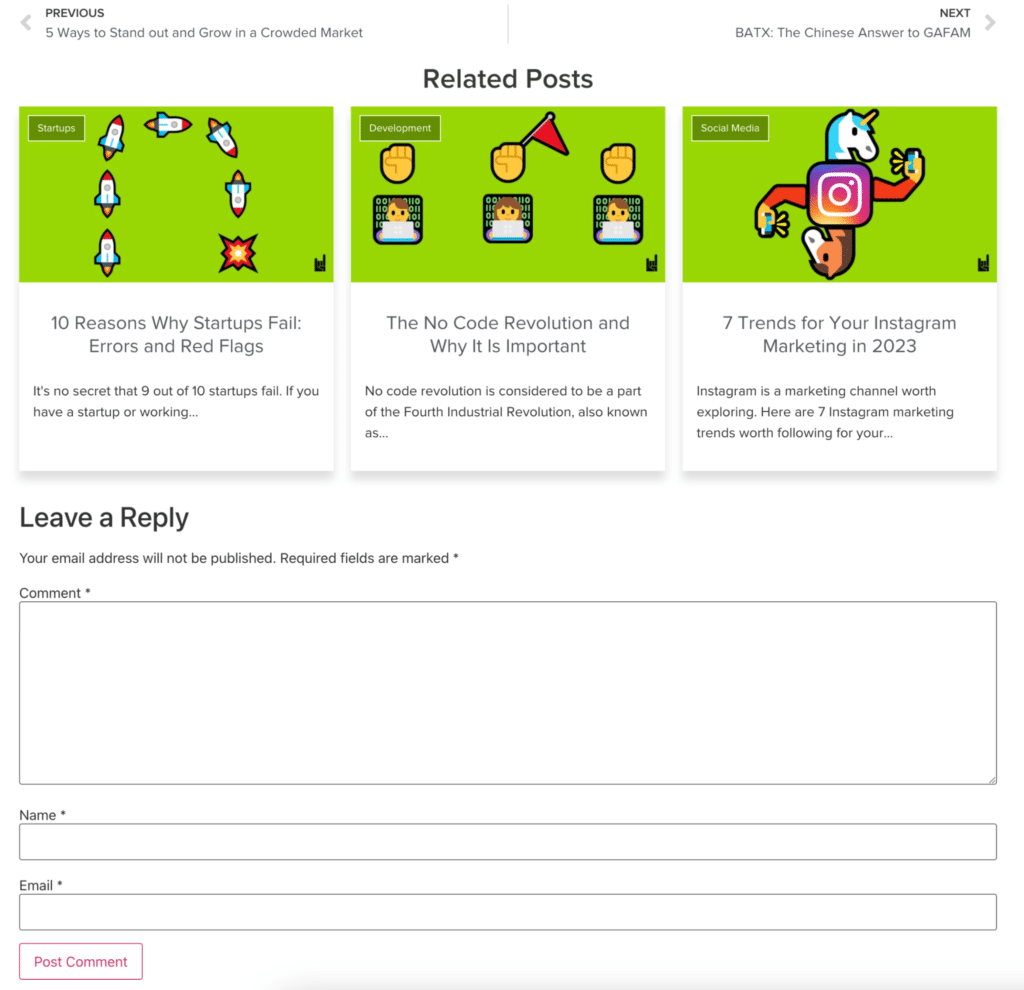
Additionally, we display related posts at the end of each article, providing readers with additional relevant content to explore, thereby extending their time on our blog.
3. Include Social Media Sharing Buttons
To encourage our readers to spread the word about our blog posts, we integrate social media sharing buttons.

These buttons make it effortless for users to share our content with their networks, increasing our reach and driving more traffic back to our blog.
4. Facilitate Easy Sharing Options
We offer various sharing options beyond social media. Users can choose to share, listen, quote, or simply copy & paste sections of our blog posts.
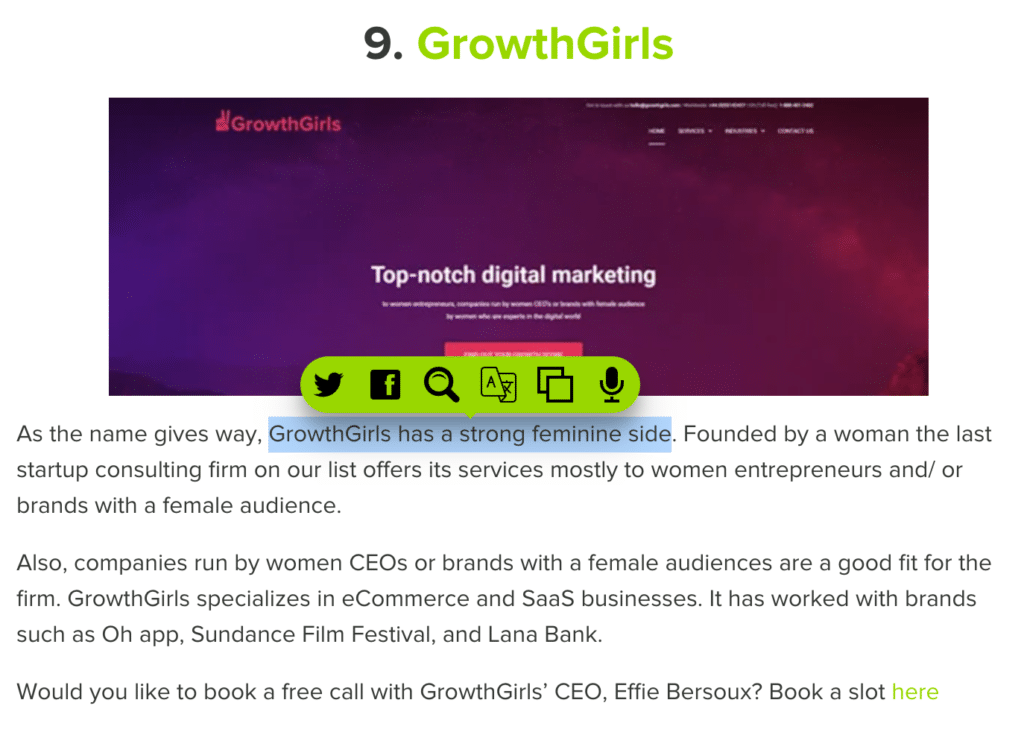
This flexibility helps our readers to consume and share our content in the format that suits them best, further amplifying our reach.
Getting More Traffic through SEO
What’s the point of creating content if no one is reading it?
There are many channels to promote your content, including email, social media, and paid advertising. But when it comes to content distribution from your blog, it’s no secret that content marketing and SEO go hand in hand. They are just made for each other.
In our case, over 70% of our blog traffic comes from organic search.
Content SEO-optimization and building a Google update-proof SEO strategy are broad enough topics to be articles by themselves, here are a few things to keep in mind.
1. Identify Your Keywords
To optimize our blog posts for search engines, we incorporate relevant keywords throughout our content. We conduct thorough keyword research to identify the terms our target audience is searching for and seamlessly integrate them into our articles.
Finding the right keywords is not just about finding relevant keywords with the highest demand and the lowest supply. You will also need to identify search intent before you write your content for it.
When it comes to blog content, there are two basic kinds of intent:
a. Informational Intent: seeking answers, knowledge, or information about a specific topic.
Example: What is Growth Hacking in 2023?
b. Commercial Intent: interested in product comparisons, reviews, pricing information, or seeking recommendations.
Example: Top 10 SaaS Marketing Agencies in 2023
There’s also one more common intent –
c. Transactional Intent: looking for products, services, or solutions/ being ready to convert.
Example: Growth Hacking Services
However, transactional intent is most of the time fulfilled through landing pages rather than blog pages, like in the example we provided.
2. Include Schema Markup for Enhanced SERP Presence
To maximize our visibility on search engine result pages (SERPs), we implement schema markup in our blog posts.
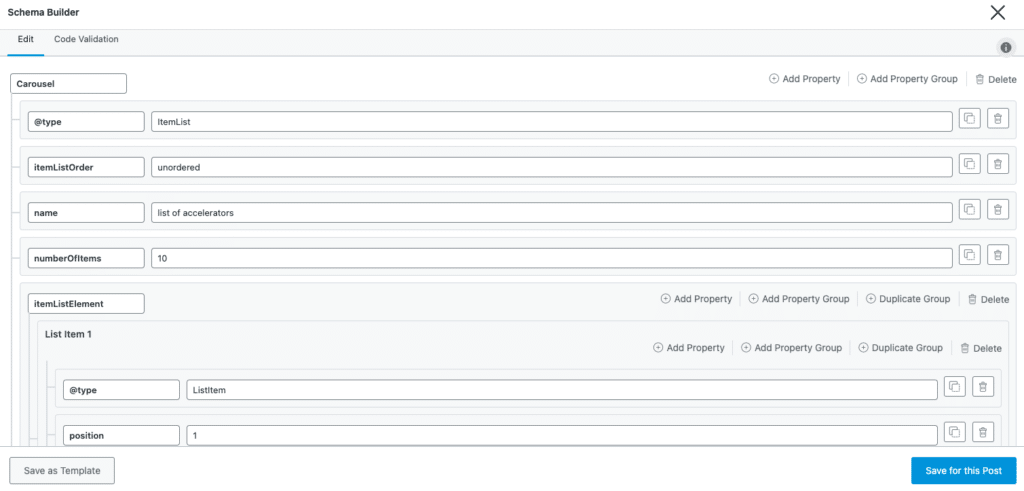
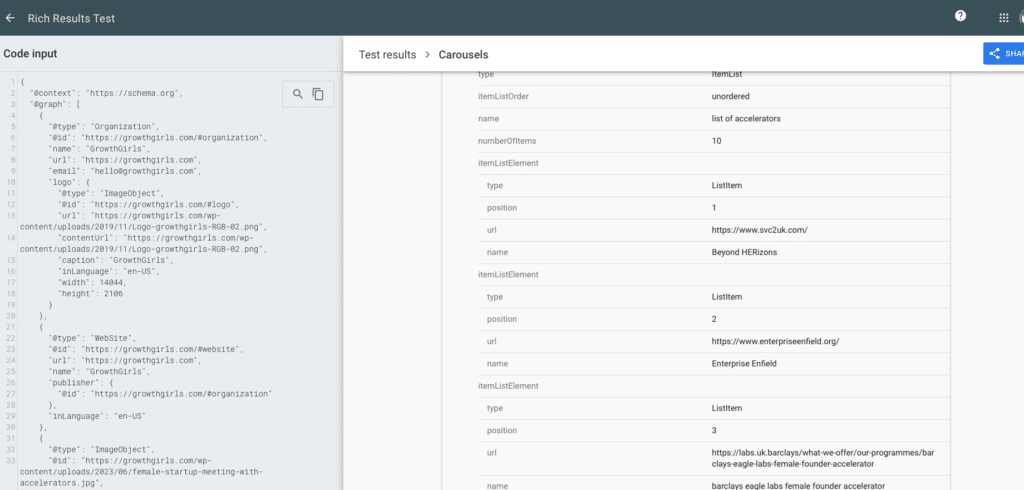
Adding schema markup helps Google understand the context and structure of our content, resulting in enhanced search engine listings that occupy more space on Google’s SERPs.
his increased visibility increases the chances of attracting organic traffic to our blog.
3. Link-building
Link-building is one of the most important parts of SEO. Search engines, such as Google, use links as a key ranking factor. When reputable websites link to your site, it signals to search engines that your content is valuable and trustworthy.
The active pursuit of these links is called link-building. Although there are many link-building tactics, we try to stay in the white hat-link-building lane, with link building through collaborations being one of our main tactics of choice.
Driving Sign-ups and Conversions
One of the most common mistakes we see in the blogs of many of our clients is the existence of blog content just for the sake of it.
In other words, many blogs have content that doesn’t serve what should be their end goal: lead generation; driving sign-ups and conversions.
So here’s what you need to keep in mind.
1. Matching Content with Services/ Products
Example 1: Hubspot
Let’s start off with an example here.
Hubspot, one of the most successful CRM platforms owes much of its success to its content. But first, some context: the platform offers many different services that are structured in hubs (hence the name). Accordingly, Hubspot users will find Marketing Hub, Sales Hub, Service Hub, CMS Hub, and Operations Hub.
Therefore, Hubspot has created relevant themes in its blogs, with its spots spanning from The Who, What, Why, & How of Digital Marketing to 21 WordPress Alternatives & Why You Might Want Them (Spoiler alert: Hubspot is one of these alternatives).
So far so good.
However, if anyone takes a look at the keywords that make up much of Hubspot’s traffic, they will find keywords such as “how to animate in photoshop” and “resignation letter” which derive from articles like How to Make an Animated GIF in Photoshop [Tutorial] and How to Write a Respectable Resignation Letter [+Samples & Templates] respectively.
Which begs the question: Why? Why does Hubspot want to rank for keywords that are unrelated to its platforms and the services it offers?
Here are a few things that come from the top of my head. First, since Hubspot is a public company, and public companies keep a close eye on many metrics. Organic traffic may be one of these metrics, in this case, having the boardroom invested in that number. As a result, the content team must work toward that goal.
Or maybe, “traffic = good” could have been the strategy of one of their past content marketing managers, who managed to rank some random terms, and since then they’ve kept updating those super-performing articles because why not?
Of course, I’m just hypothesizing here. I’m pretty sure that what they are doing is best for them. But the bottom line is that Hubspot has the luxury of creating content with less focus. If you are Hubspot, or a company with a spare budget, then by all means, go for it.
However, if you are like most startups, businesses, and companies, you want to make every piece of content count. And the way to do that is by matching your content with what you sell.
With this example, we don’t want to throw any shade – we just want to prove a point in practice.
So let’s take another example – this time ourselves.
Example 2: GrowthRocks
Among our blog posts, you will also find GAFAM: The Big Five Tech Companies Facts (FAAMG). As the title suggests, this is not a marketing-related topic, let alone a topic linked to growth marketing or growth hacking. It’s a post about the Big 5 Tech and their 5 biggest acquisitions. And we even made an infographic for this particular post. Also, forgot to mention, it’s our longest article – almost 7k words long.
So if the topic is not very related to what we do then why did we invest so much in it? The truth is that it was more of an experiment; that proved to be a successful one.
At a certain point, it became by far our most-visited article from organic channels. And, most importantly, it’s managed to attract a lot of backlinks organically (more than 236 backlinks from 164 domains, with 73% of them being dofollow).
Conclusion: Organic traffic without relevance becomes a vanity metric. The overwhelming majority of your content, especially if you are one the first stages of your blog marketing, should be closely related to your products, services, or SaaS.
2. Include Calls to Action (CTAs) in Blog Posts
Lastly, you mustn’t forget to create bridges between your content and your services. It’s no secret that the best path for lead generation is the path with the least friction. You can achieve that as easily by adding a CTA to your blog posts.
For example, in many of our posts, we include clear and compelling calls to action (CTAs) to prompt our readers to take the next step.
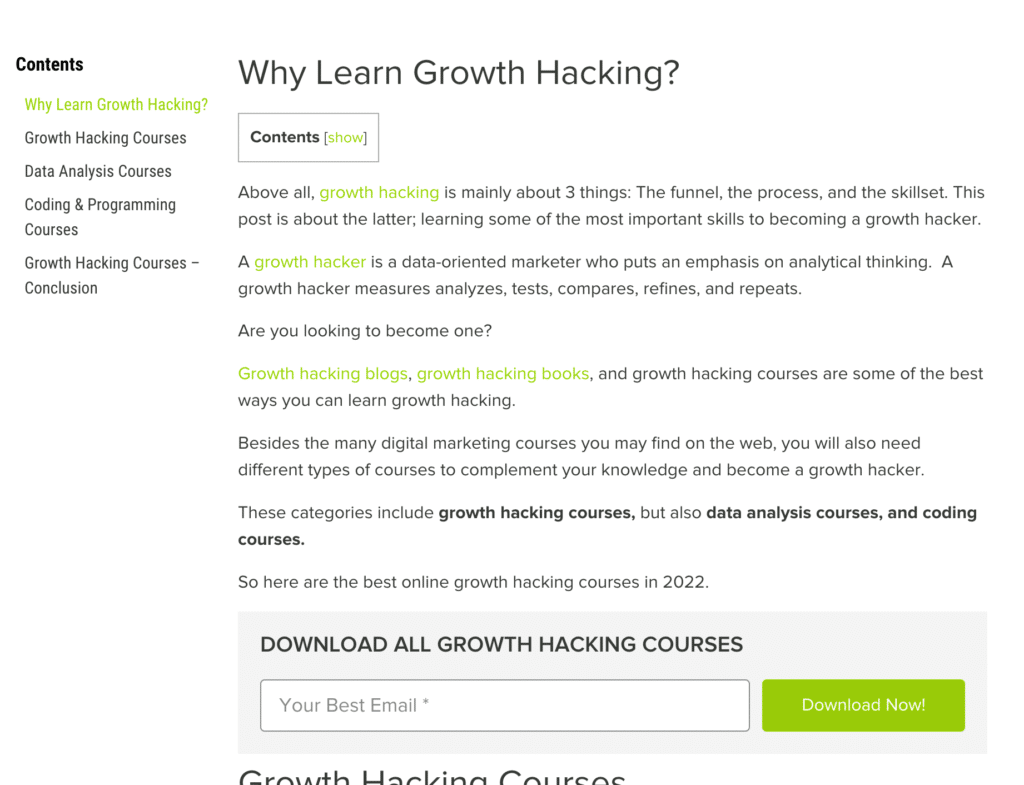
These CTAs may encourage readers to contact us for a consultation, get a free eBook or ask to learn more about the topic they read. Either way, these contact points will help with user activation and move users down our growth funnel.
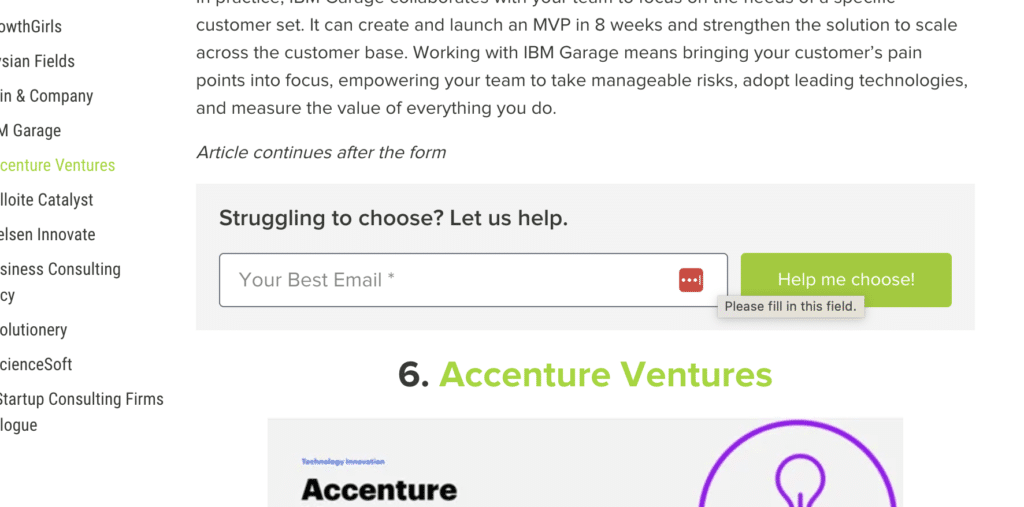
By strategically placing relevant CTAs throughout our content, we guide our audience toward the desired action for each page.
Showing Authority
Our blog serves as a platform to establish ourselves as industry authorities. In other words, we back our claims and insights with credible data, case studies, and examples, showcasing our expertise and thought leadership.
By consistently delivering valuable and authoritative content, we build trust with our audience and position ourselves as a go-to resource in our field. Here’s the breakdown.
1. Incorporate Reviewers and Credible Sources
To further strengthen our client’s blog’s credibility, we involve reviewers and incorporate credible sources.
Accordingly, we cite reputable sources such as industry reports, studies, and expert opinions to support our claims and provide readers with additional resources for further exploration.
We haven’t implemented this for our own blog (yet) but we’ve done that for some of our clients, whenever necessary.

2. Maintain Document History
Transparency and continuous improvement are vital aspects of any blog. But this becomes true, especially for blogs with evergreen content.

This can give your readers a glimpse into your commitment to providing accurate and up-to-date information.
3. Ask for Feedback
We also actively encourage feedback from our audience, inviting them to share their thoughts, suggestions, and corrections, which helps us refine our content and better meet their needs.

I write for GrowthRocks, one of the top growth hacking agencies. For some mysterious reason, I write on the internet yet I’m not a vegan, I don’t do yoga and I don’t drink smoothies.
